Davenport is the Director for Nonproliferation Policy at the Arms Control Association (ACA). Masterson, who contributed to the original article, was a research associate at ACA until March 2022.
What does the International Atomic Energy Agency (IAEA) monitor in Iran?
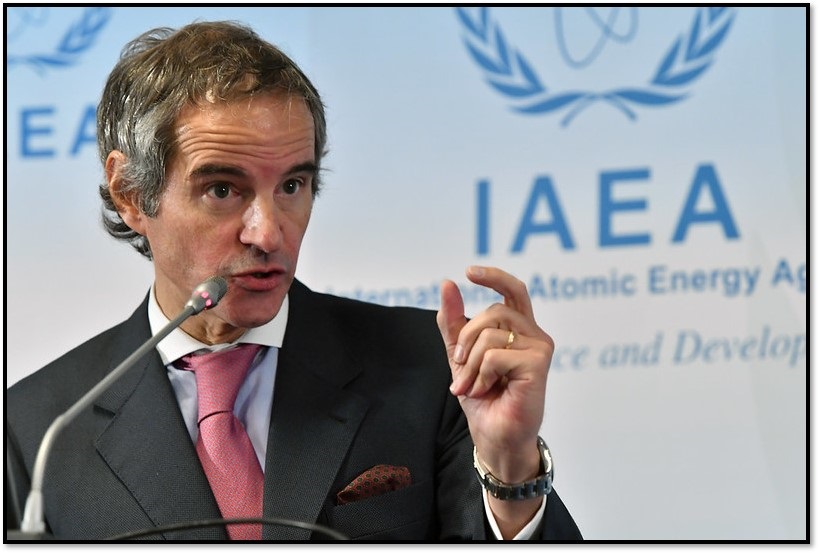
The IAEA inspections and monitoring regime for Iran is considered the toughest ever negotiated. The U.N. nuclear watchdog agency is assigned to monitor and verify a series of commitments made by Tehran—first in 1974 under the Nuclear Nonproliferation Treaty (NPT) and later in 2015 as part of the Joint Comprehensive Plan of Action (JCPOA). They include:
- The Comprehensive Safeguards Agreement: As a signatory to the NPT, Iran signed a Comprehensive Safeguards Agreement (CSA) with the IAEA in 1974. It mandates that the IAEA conducts monitoring and verification inspections to ensure that Iran’s declared nuclear materials are used only for peaceful purposes. Materials subject to safeguards include fissionable materials—such as uranium-235 and plutonium-239—that could also be used to form the core of an explosive nuclear device. As a member of the NPT, Iran will still be legally obligated to implement the CSA even if the JCPOA collapses or Tehran withdraws from it.
- Additional Protocol: The NPT does not require any country to sign an additional protocol, but any country that does sign and ratify one is legally bound to comply with its terms. As with a CSA, the additional protocol is negotiated with the IAEA and is tailored to a country’s nuclear profile. The JCPOA requires Iran to provisionally implement its own Additional Protocol in perpetuity.
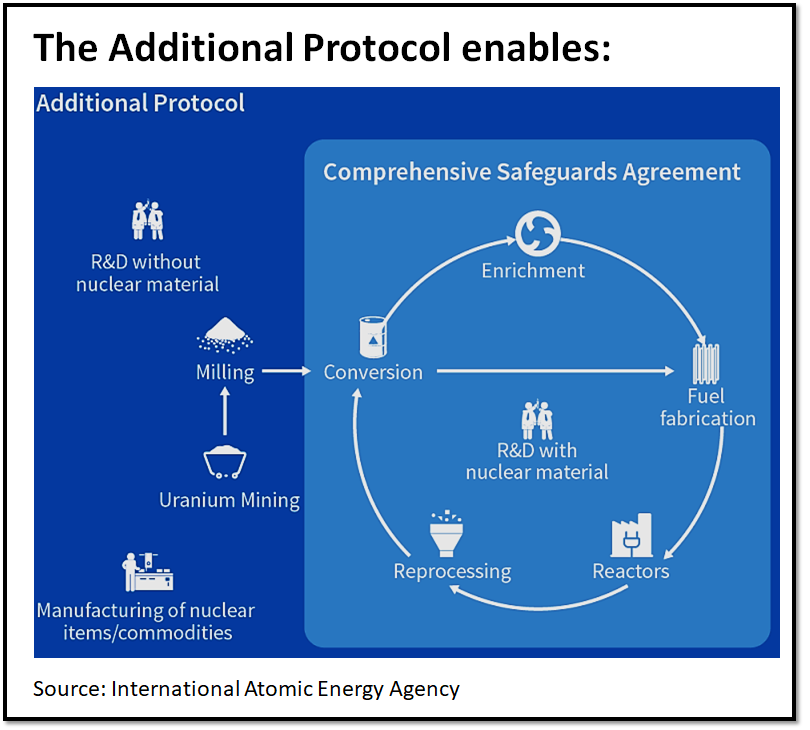 The protocol expands IAEA access to facilities and information about Iran’s entire fuel cycle. This includes facilities that support a nuclear program but do not have nuclear materials, such as places that produce components for nuclear activities (like centrifuges) or that conduct research and development. Inspectors are allowed to conduct inspections on short notice at all nuclear facilities under the additional protocol.
The protocol expands IAEA access to facilities and information about Iran’s entire fuel cycle. This includes facilities that support a nuclear program but do not have nuclear materials, such as places that produce components for nuclear activities (like centrifuges) or that conduct research and development. Inspectors are allowed to conduct inspections on short notice at all nuclear facilities under the additional protocol.
The Additional Protocol allows the IAEA to monitor the mining and milling of uranium, which is not covered by a CSA. It also expands the circumstances under which the IAEA can use certain tools—such as environmental sampling. Under the Additional Protocol, the IAEA has complementary access to any location in a country to ensure that it does not have undeclared nuclear materials and to test whether nuclear materials are or were once present.
The IAEA uses the CSA and the Additional Protocol to ensure that all nuclear materials are used for peaceful purposes, have not been diverted for undeclared activities, and that there is no evidence of undeclared nuclear materials or activities. The IAEA has not been able to make that determination for Iran.
- JCPOA Mandates: Under the 2015 nuclear deal, the IAEA monitors Iran’s entire nuclear fuel cycle, including research and development. It is also mandated to verify that Iran is not conducting activities prohibited by the deal. The JCPOA provides the IAEA with access to Iran’s nuclear program beyond what is required by the CSA or additional protocol. The deal stipulates that:
○ Iran provide inspectors with daily access to uranium enrichment facilities for 15 years, dating from 2016,
○ Iran’s uranium mines and mills are under continuous monitoring for 25 years, dating from 2016
○ Iran’s centrifuge production facilities are continuously monitored for 20 years, dating from 2016.
○ The Joint Commission (the JCPOA oversight body) approves Iran’s purchases of dual-use materials—or goods for either civilian or nuclear use—for 10 years dating from 2016.
○ Iran is also prohibited—in perpetuity—from engaging in certain weapons-relevant research, even for non-nuclear purposes.
The IAEA does not determine if Iran has violated its JCPOA obligations, but the agency has chronicled Iran’s breaches since Tehran began reducing compliance in May 2019. After the assassination of Mohsen Fakhrizadeh in November 2020, Iran’s Parliament passed a law (see below) that called for the suspension of inspections required under the Additional Protocol and other limits under the JCPOA. The law has limited the IAEA ability to monitor Iran’s nuclear activities beyond what is required by the CSA since February 2021.
How many IAEA inspectors are in Iran? Do they live there permanently or rotate in and out?
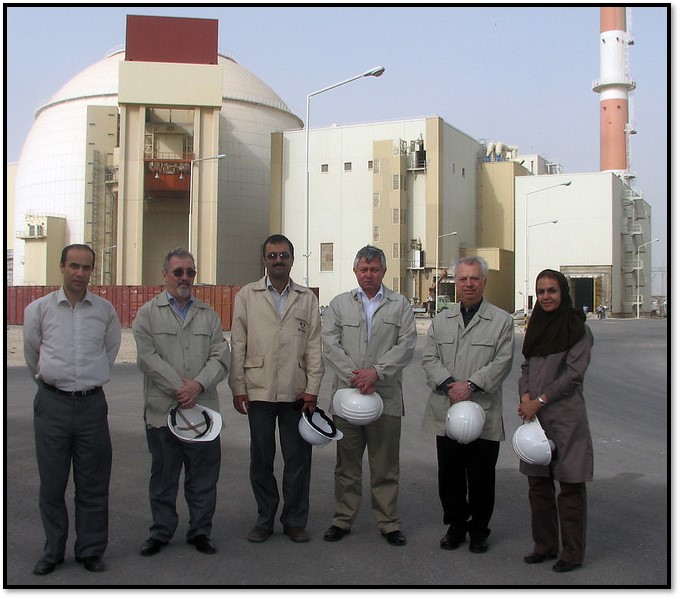
As of 2020, the IAEA had 285 inspectors assigned to Iran. In 2020, they conducted 426 inspections. The total number of inspections likely dropped in 2021 because Iran suspended the Additional Protocol.
Inspectors do not live permanently in Iran, but the Additional Protocol requires that Tehran issue multiple-entry visas for inspectors valid for at least one year. Under the JCPOA, Iran is also required to provide adequate workspace for inspectors near nuclear facilities. Iran has continued to abide by these provisions despite suspending the Additional Protocol and some monitoring under the JCPOA.
Why does Iran face such tough inspections?
The JCPOA includes more intrusive monitoring because Iran had violated its CSA in the past to work on a covert nuclear weapons program. In 2002, the IAEA began investigating evidence that Iran conducted illicit activities. In 2003, the IAEA Board of Governors reported that Iran had failed to explain the import and processing of uranium or to declare the facilities involved. The IAEA also requested samples from a facility where Iran was manufacturing centrifuges to check for uranium.
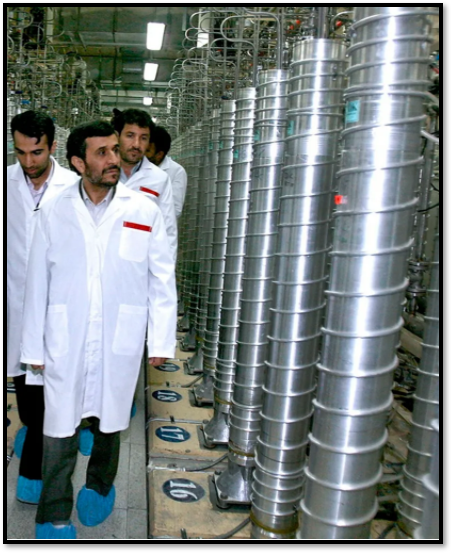
Iran’s failure to fully cooperate with the IAEA led to resolutions by its Board of Governors. The first resolution issued in September 2003 called on Iran to cooperate with the IAEA and “ensure there are no further failures to report material, facilities and activities.” In 2006, the Board referred Iran to the U.N. Security Council. A subsequent U.N. resolution demanded that Iran halt uranium enrichment and called on Tehran to fully cooperate with the IAEA. Between 2006 and 2010, the Security Council issued five more resolutions on similar points; it also began imposing sanctions on Iran for failing to comply.
The IAEA investigation expanded to include activities related to nuclear weapons development at military locations. In November 2011, an IAEA report detailed the “possible military dimensions” to Iran’s past nuclear program.
In 2015, as part of the JCPOA, Iran was required to provide the IAEA with answers about its undeclared nuclear activities—including work related to weapons—to the IAEA. Iran met this obligation, but it does not appear to have fully disclosed the extent of its weapons work. In December 2015, the U.N. watchdog agency issued a report concluding that Iran had an organized nuclear weapons program until 2003 and that some activities continued through 2009. But it found no evidence of weaponization work after 2009. Iran continued to deny that it ever pursued nuclear weapons.
The 2015 report closed the IAEA investigation, but the agency is still obligated to follow up on any evidence of undeclared nuclear materials or activities. Since 2018, the IAEA has questioned Iran on possible safeguards violations, including four undeclared sites presumed to have been used for nuclear activities or storing nuclear materials produced before 2003. The IAEA conducted environmental sampling at three of the locations and detected the presence of uranium. Iran has yet to provide satisfactory answers to the agency.
What facilities does the IAEA monitor?
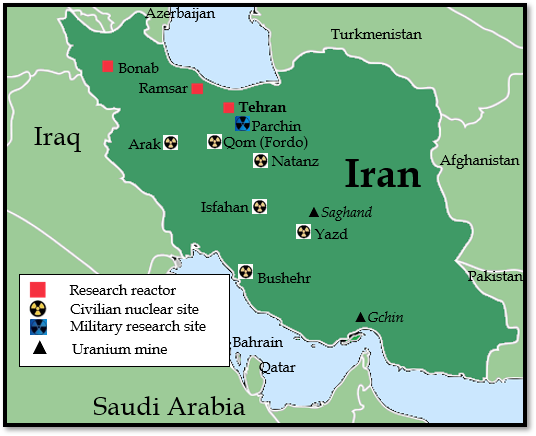 Some facilities have been monitored consistently since Iran signed its CSA in 1974. Others, built later, were subsequently added. As of late 2022, Iran’s CSA with the IAEA allowed regular inspections at facilities that included:
Some facilities have been monitored consistently since Iran signed its CSA in 1974. Others, built later, were subsequently added. As of late 2022, Iran’s CSA with the IAEA allowed regular inspections at facilities that included:
- the Fuel Enrichment Plant and Pilot Plant in Natanz,
- the Fordow Fuel Enrichment Plant,
- the Tehran Research Reactor,
- the Bushehr reactor,
- the Fuel Plate Fabrication Plant in Isfahan,
- and Uranium Conversion Facility in Isfahan.
Iran voluntarily implemented the Additional Protocol between 2003 and 2006, so the IAEA had access to additional facilities that did not have nuclear materials during that period. In 2006, however, Tehran stopped complying after the IAEA referred Iran to the U.N. Security Council for past violations.
In 2016, as part of the JCPOA, Iran again agreed to implement the Additional Protocol and did so until February 2021. Iran had 21 nuclear facilities under safeguards in 2020.
In June 2020, an IAEA resolution censured Iran for failing to cooperate with an IAEA inquiry into possible past undeclared nuclear activities and materials. Shortly thereafter, Iran allowed the IAEA to take environmental samples from two of the four sites under investigation. Iran had allowed samples to be taken from a third site in 2019. In September 2021, IAEA Director General Rafael Grossi said that “multiple uranium particles” of human origin at three undeclared sites and “isotopically altered particles” at one of the three sites was a “clear indication” that material or equipment contaminated by nuclear material may have been present.
These investigations are separate from the JCPOA, as they do not involve current nuclear activities. But evidence presented by the IAEA suggests that Iran did violate its CSA by failing to declare the materials and facilities.
In a May 2022 report, the IAEA concluded that Iran conducted activities related to uranium metal at one of the four facilities in question that should have been declared under the country’s CSA. Iran has not provided the IAEA with clarifications regarding the uranium traces found at the other three locations. In June 2022 and November 2022, the IAEA’s Board of Governors censured Iran for failing to cooperate with the IAEA’s investigation.
What impact did Iran’s law on nuclear inspections—passed in December 2020—have on monitoring?
In December 2020, Parliament passed a new law mandating that Tehran halt any IAEA inspections beyond those mandated by the CSA within two months—unless U.S. sanctions imposed by the Trump administration were lifted. On Feb. 23, 2021, Iran formally suspended the Additional Protocol and other monitoring in the JCPOA. Tehran’s CSA with the IAEA, however, remained in place.
To avert a crisis, Iran and the IAEA reached a temporary arrangement two days before inspections were suspended. Iran allowed the IAEA monitoring equipment to continue collecting data at certain sites, but it would not turn over the data until sanctions were lifted.
Director General Grossi said that the arrangement allowed the IAEA “to continue to monitor and to register all the key activities” so that the agency could eventually recover the information. “In other words,” he said, “we will know exactly what happened, exactly how many components were fabricated, exactly how much material was processed or treated or enriched and so on and so forth.” The arrangement was negotiated to last three months until May 2021. It was renewed for an additional month. It expired on June 24, 2021.
Iran then repeatedly ignored IAEA requests for access to inspect and service the monitoring equipment. In September 2021, Iran and the IAEA reached another agreement that allowed the IAEA to service the cameras and replace data storage. Iran gave IAEA inspectors access to all sites except the Karaj centrifuge component manufacturing workshop.
In November 2021, the IAEA reported that it will face a “significant challenge” eventually regaining knowledge about the state of Iran’s program because of the limits on monitoring and inspections. The lack of access to the Karaj facility also “seriously” affected the IAEA’s ability to eventually restore the “continuity of knowledge” essential to resume monitoring if the JCPOA was restored.
In June 2022, Iran disconnected 27 cameras that were monitoring facilities that the IAEA had not accessed since February 2021. Iran also disconnected the online enrichment monitors that tracked uranium enrichment levels in real time. Director General Grossi warned that Iran’s decision to disconnect the cameras “would be a fatal blow” to reviving the deal within three-four weeks. In a November 2022 report, Grossi said that the IAEA will face “considerable challenges” in in reestablishing a baseline for certain Iranian nuclear activities given the gap in monitoring.
What was the IAEA not able to monitor and inspect in since February 2021?
After Iran suspended the Additional Protocol for a second time in 2021, the IAEA lost access to some facilities, including:
- The heavy-water production plant at Arak
- The centrifuge manufacturing sites, including the facilities at Karaj and Natanz
- and the uranium mines and mills at Saghand and Gchine

If the JCPOA is restored, Iran will give the IAEA the data collected by agency cameras under the February 2021 special arrangement. There is a gap, however, in coverage of the Karaj facility dating from June 2021 and a gap in monitoring of other facilities dating back to June 2022.
In June 2021, Karaj was sabotaged—Tehran accused Israel—after which Iran removed the four IAEA cameras there. Iran cited alleged damage from the attack. In August, Iran allowed the IAEA to inspect the cameras; the inspectors noted that the data storage unit was missing from one of them. The IAEA was also not able to determine if the data in the other three cameras was recoverable.
Inspectors attempted to replace the cameras three times. In the November report, Grossi called IAEA access to the site “indispensable” for continuity of knowledge. Iran has claimed, however, that the site is not covered by the September 12 agreement. Iran has also said it is investigating whether the cameras were used to aid the attack, an allegation that the IAEA has denied.
In November, The Wall Street Journal reported that Iran resumed centrifuge production at Karaj in late August and had manufactured components for 170 advanced centrifuges. The IAEA says it cannot confirm if Karaj is operational. But activity that is not monitored raises concern about whether Iran is diverting material as well and about whether the IAEA will be able to reconstruct a record of Iran’s activities down the road.
In April 2022, Iran moved the equipment from the Karaj site to a new centrifuge production facility at Natanz. The IAEA installed surveillance cameras at the new Natanz site, but the agency has not conducted any inspections at that location.
Iran disconnected 27 surveillance cameras, including those installed at the Natanz centrifuge workshop, and the online enrichment monitors that tracked Iran’s enrichment levels in real time in June 2022. The decision to turn off the cameras was a response to the IAEA Board of Governor’s resolution that censured Iran for failing to cooperate with the agency’s investigation in past, undeclared nuclear activities.
Activity that is not monitored raises concern about whether Iran is diverting material as well and about whether the IAEA will be able to reconstruct a record of Iran’s activities necessary to verify JCPOA commitments down the road.
How does the IAEA monitor nuclear programs?
The IAEA has different tools to verify the amount of fissile material; whether the material is used only for peaceful purposes; whether there are any undeclared materials or activities.
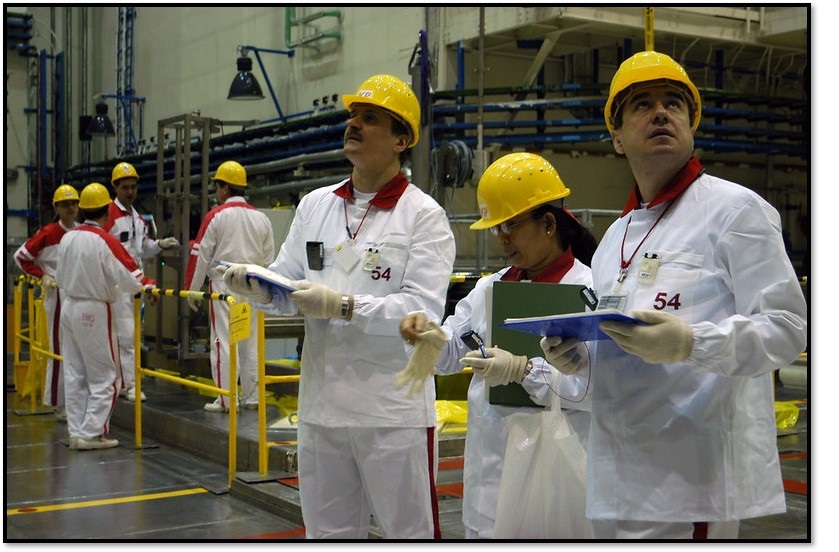
The IAEA first collects information about a country’s nuclear program. A government is required to detail materials, facilities, and activities in a declaration to the agency. The IAEA evaluates whether the information is consistent with:
- formal safeguards,
- information from either open sources, such as satellite imagery,
- intelligence provided by other countries,
- and IAEA observations.
The IAEA then develops safeguards that cover plausible pathways in the event a country state decides to develop a nuclear weapon and verify that a state’s declaration is complete. Every year, safeguards information is analyzed and the IAEA issues its findings.
What kind of equipment and tools does the IAEA have?
The IAEA inspections and verification tools include:
- Accounting for nuclear material to determine if stockpiles of materials match what a state has declared,
- Verifying the design of facilities to determine if they are used for the declared purpose,
- Environmental sampling to determine if nuclear materials are consistent with what was declared to the IAEA,
- Measurement techniques to determine the amounts and concentration of nuclear materials
- Surveillance technologies, such as cameras and protective seals, to provide data between inspections. Some of these technologies transmit information directly to the IAEA.
In addition to standard practices, the JCPOA allows the IAEA to use new technologies, such as online enrichment monitors that track Iran’s uranium enrichment levels in real time.
In addition to routine inspections, the IAEA uses three other types of inspections for states with a CSA:
- Ad hoc inspections to verify declarations and changes to a state’s stockpile of nuclear materials.
- Special inspections if concerns arise during a routine inspection and/or information provided by a state is not adequate for the IAEA.
- Safeguards visits to verify the design of facilities included in a state’s nuclear declaration. These are often used when a facility is being constructed, modified, or decommissioned.
For states with an additional protocol in place, the IAEA can conduct short-notice inspections at declared nuclear facilities.
The additional protocol also gives inspectors complementary access to any location in Iran to ensure the absence of undeclared nuclear materials and address any inconsistencies. The additional protocol also expands the right to do environmental sampling at undeclared sites. The IAEA, for instance, used sampling in 2019 and 2020 to determine the presence of uranium at locations that Iran had not declared—and were thus a likely violation of Iran’s safeguards. The sampling indicated that the material dated before 2003, when Iran had a covert nuclear weapons program.
The IAEA judges safeguards every year. Ideally, for a country implementing a CSA and an additional protocol, the IAEA will conclude that:
- a country is using all nuclear materials for peaceful purposes,
- a country is not diverting material for undeclared activities,
- there are no undeclared nuclear materials and activities.
In 2020, the IAEA was able to issue this conclusion for 69 of the 131 states that implemented a CSA and an Additional Protocol in 2019. The IAEA was unable to reach this conclusion for Iran.
For states with only a CSA, the IAEA seeks to conclude that all declared nuclear materials are for peaceful purposes.
What is the background of IAEA monitoring?
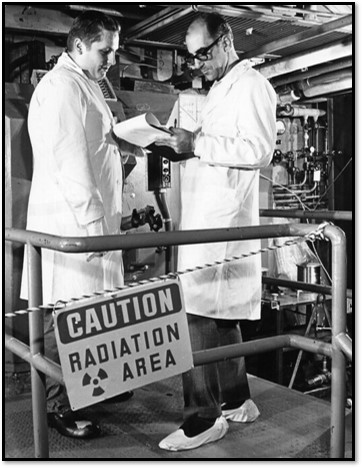
The IAEA was created in 1957 to help promote and expand access to peaceful nuclear technology, while ensuring that it did not contribute to military purposes. President Dwight Eisenhower’s “Atoms for Peace” speech served as the impetus for creation of the IAEA.
Article II of the IAEA’s statute summarizes its mission: “The Agency shall seek to accelerate and enlarge the contribution of atomic energy to peace, health and prosperity throughout the world. It shall ensure, so far as it is able, that assistance provided by it or at its request or under its supervision or control is not used in such a way as to further any military purpose.”
The IAEA concluded its first safeguards agreement in 1959 with Canada. But safeguards were not legally mandated until the NPT was brokered in 1968. The NPT requires signatories to conclude a CSA with the IAEA. The five states that tested nuclear weapons prior to the NPT are exempt from this requirement.
In the 1990s, the IAEA determined that the safeguards system was insufficient. Its experiences in Iraq and North Korea highlighted the limits of a CSA. Both countries were pursuing covert weapons programs that utilized their declared nuclear facilities. In 1997, the IAEA introduced the Model Additional Protocol to strengthen its ability to detect undeclared nuclear materials and activities. The additional protocol builds on a CSA.
How does the IAEA inspections regime in Iran compare to arrangements with other countries?
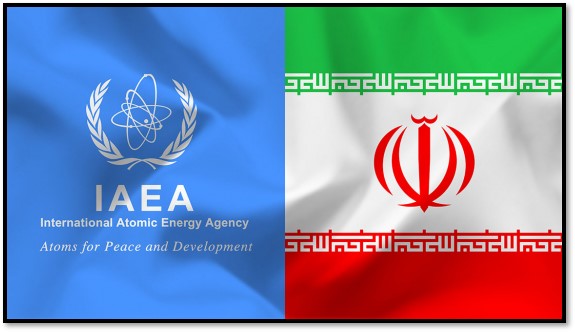 All members of the NPT—with five exceptions—are legally required to have a safeguards agreement, whether or not they have nuclear programs. The exceptions are the five countries—Britain, China, France, Russia, and the United States—that developed nuclear weapons prior to the treaty. The IAEA has concluded CSAs with 189 of the 191 signatory states. The IAEA has concluded an additional protocol with 140 countries. Another 13 states, including Iran, have signed but have yet to ratify the protocol. An additional protocol is not required, but it is considered a best practice.
All members of the NPT—with five exceptions—are legally required to have a safeguards agreement, whether or not they have nuclear programs. The exceptions are the five countries—Britain, China, France, Russia, and the United States—that developed nuclear weapons prior to the treaty. The IAEA has concluded CSAs with 189 of the 191 signatory states. The IAEA has concluded an additional protocol with 140 countries. Another 13 states, including Iran, have signed but have yet to ratify the protocol. An additional protocol is not required, but it is considered a best practice.
States may have various quantities of nuclear materials; some states operate large civilian nuclear power programs. The IAEA develops unique safeguards for each country. Countries with larger programs are often subject to more inspections. In 2019, Japan had 125 declared nuclear facilities and was subject to 279 inspections, whereas the Netherlands, with eight declared nuclear facilities, was subject to 53 inspections. The number of inspections can also depend on questions about a country’s nuclear declaration.
Countries with limited nuclear programs or no nuclear materials can negotiate a protocol on small quantities. It suspends some provisions of a CSA to simplify the safeguards. Since 1974, 89 states have negotiated small-quantities protocols with the IAEA; 77 have updated the terms to comply with an IAEA update in 2005.
The five recognized nuclear weapon states are not required by the NPT to implement a CSA. But the IAEA conducts inspections at select facilities used for peaceful purposes in all five countries. These safeguards are known as voluntary offer agreements.
The IAEA also has agreements for specific nuclear materials and facilities. Countries with item-specific safeguards agreements commit to not using materials and facilities covered by those arrangements for military purposes. The IAEA has concluded item-specific safeguards agreements with three countries—India, Israel, and Pakistan—that have nuclear weapons outside of the NPT but also have civil nuclear programs.
